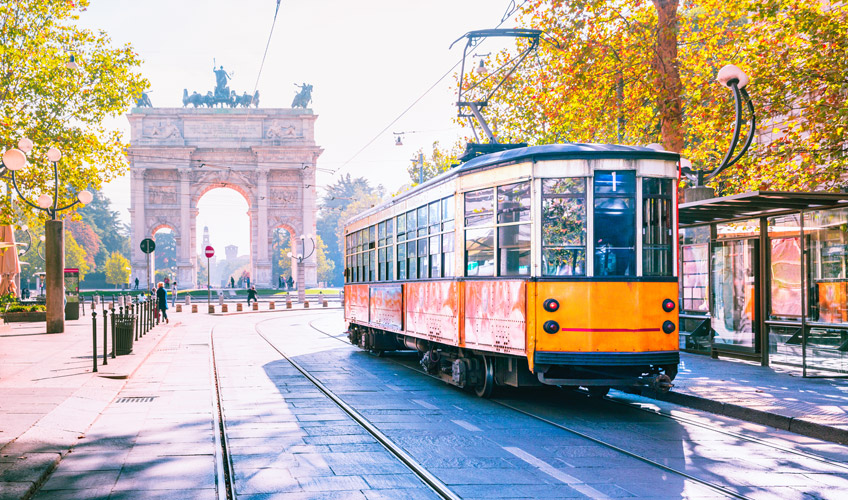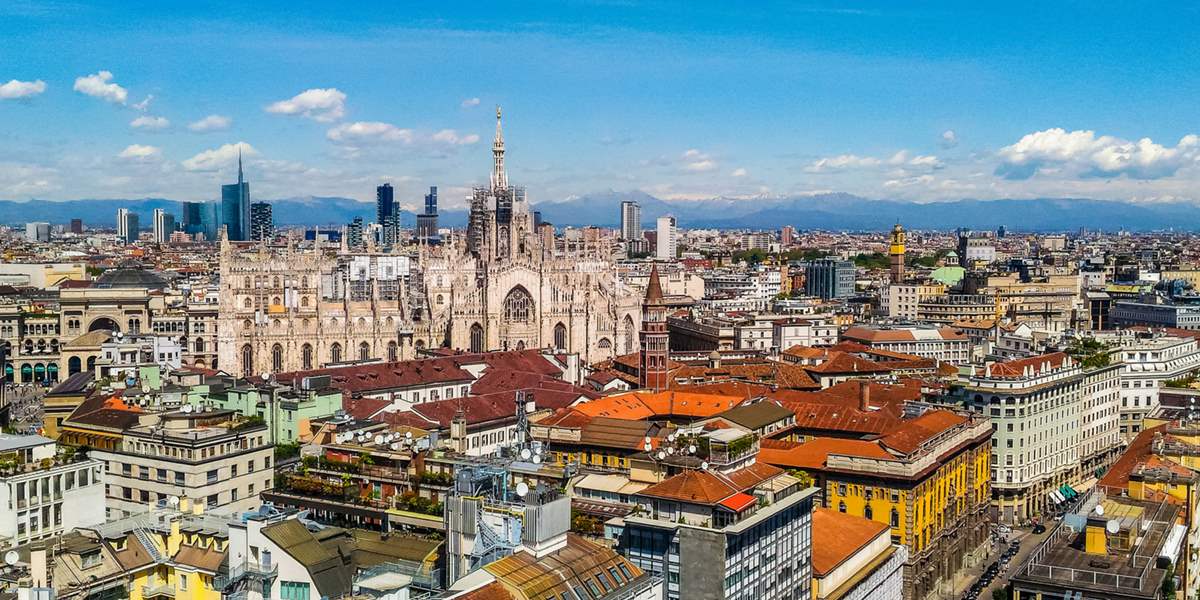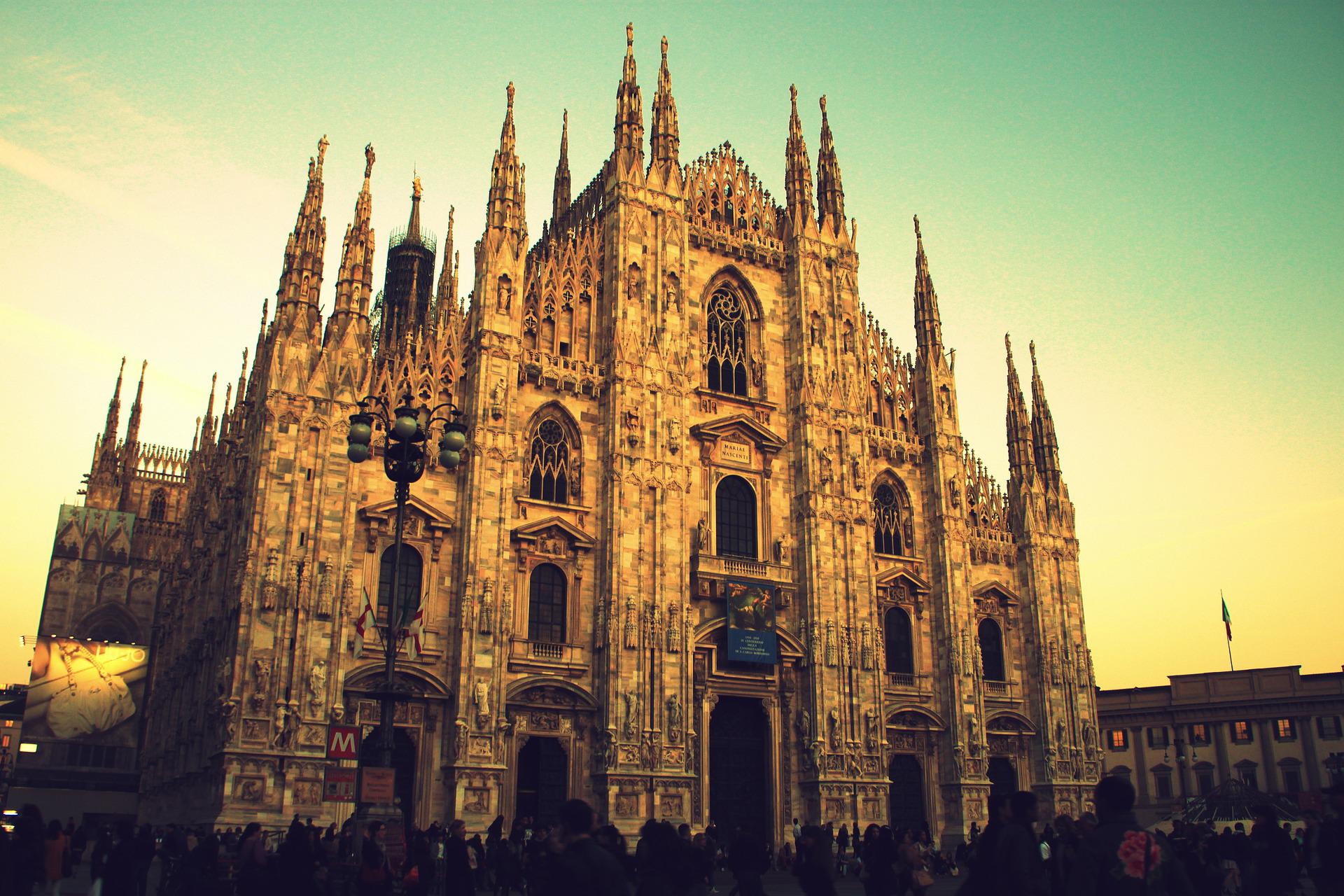


Milan is an important centre whose main activities are industry, trade and finance. It covers a total area of 182 square kilometers and has an establish- ished population of over one million nine hundred thousand. The earliest history of Milan dates back to 400 B.C. with the settling of Gallic tribes in the heart of the Po Valley. These tribes mixed with the already existing Insubres, and the Etruscans, whose splendid historical era was about to close. Both the age of foundation and the origin of its name are derived from tradition. Historians base their theories on archeological findings which have been dug up from Milan’s sub-soil.

The ancient name ” Mediolanium ” might have its origin in the settling of Belloveso and his tribes in the centre of the Plain of Lombardy, that is in the centre of the triangle between the rivers Po, Ticino and Adda. Legend has it that the name is derived from the “ scrofa semi lanuta “, that is half-woollen sow, (from the Latin: medio = semi and lanum=wool), but this seems improbable although the sow may have been used in the coat of-arms. In 222 B.C. the Romans invaded Milan and development has been going on ever since. The once small village grew larger and greater, and out of the original few acres of the early ” Castrum ” it reached the peak of its splendor in the third and fourth centuries.
The poet Ausonio called it “Roma secunda ” (the second Rome). Massimiano, who shared the empire with Diocleziano, established his residence here, and undertook to embellish it with great new buildings and wider walls. In 313 Constantine proclaimed his famous edict of free worship, here in Milan. In this period the paleochristian basilicas were built. In 374 St. Ambrose was appointed bishop of the diocese, and on his death, in 397, the Milanese Church took up the Ambrosian Rite which is still used today.

The most admired and remarkable remains of the Roman ” Mediolanum ” are the sixteen columns of St. Lorenzo in Corso Ticinese, while the Massimiano walls are partly incorporated could be begun. The castle was victim of more great damage during the bombing of 1943, but alter the war more reconstruction work was clone cn the buildings, the Ancient Arts Museum and the halls of the forts. The front of the castle with its round towers on each side, laces the city, in the centre of the front we can see the Tower of Filarete, rebuilt in 1900 with Beltrami’s refacing. The interior is divided into the great courtyard or military square, and, looking towards the park, the fort on the left, and the ducal courtyard on the right. Between these two, rises the tower added by Bona of Savoy in 1477. The two massive towers on the park-side corners give it the appearance of a fortress. The north tower houses the Hall of Assi (boards), while the other, called the Castellano Tower or Treasure Hall, contains the remains of Bramante’s fresco painting of Argus.
The Ancient Arts Museum contains varied artistic material, and is interesting to visitors also for its Renaissance period halls. It is world famous for its works by Leonardo and Michelangelo, the greatest artists Italy ever produced. The museum winds through the halls on the ground and first floors of the ducal courtyard, from the Chancellery Hall one can walk along the battlements, through the tower of Bona of Savoy to the fortress hall which houses a collection of ceramics and musical instruments. In the hall once called the Scarlioni Hall because of its decorations, we find the ” Pieta Rondanini ”, Michelangelo’s last — unfinished — work. Among the other sculptures can be seen the lving statue of Gastone of Foix bv Bambaia. In the Hall of Assi, so called because of the panelling which covers the walls, Leonardo created the most prodigious decorations which transform the vault of the ceiling into a dome of extraordinarily beautiful green leaves. One of the halls is dedicated to ancient armourv and houses armoury, halberds, shields, spears, spiked clubs and helmets, most of which were produced bv Milanese armourers. Other rooms are the homes of antique furniture, and the picture gallery is rich in the works of Lombardic painters. The fourteenth century frescoes in the room which is a reconstruction of a room once lound in the Roccabianca Castle near Parma, are also interesting as they represent the ” Story of Gualtieri and Griselda ”.
Finally, a must-see in Milan is the church of Santa Maria Delle Grazie, where Leonardo Da Vinci’s famous painting of the Last Supper of Jesus is located. You can see this work in the refectory section of the church with a guide by booking a last supper tour.